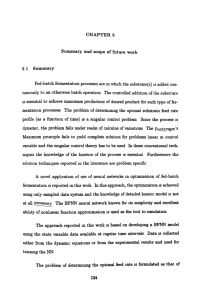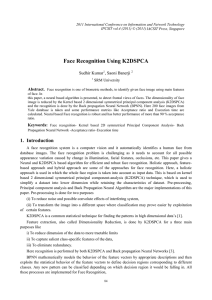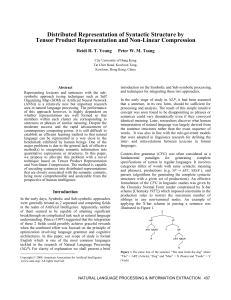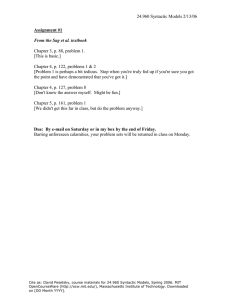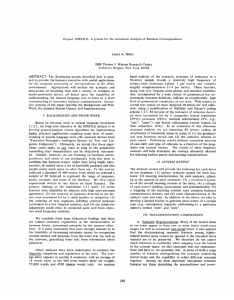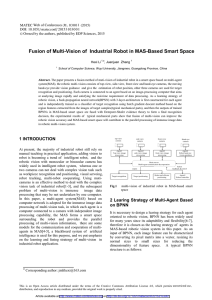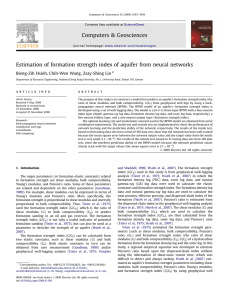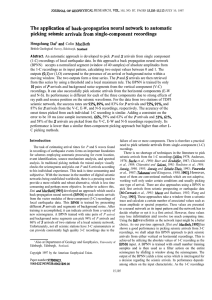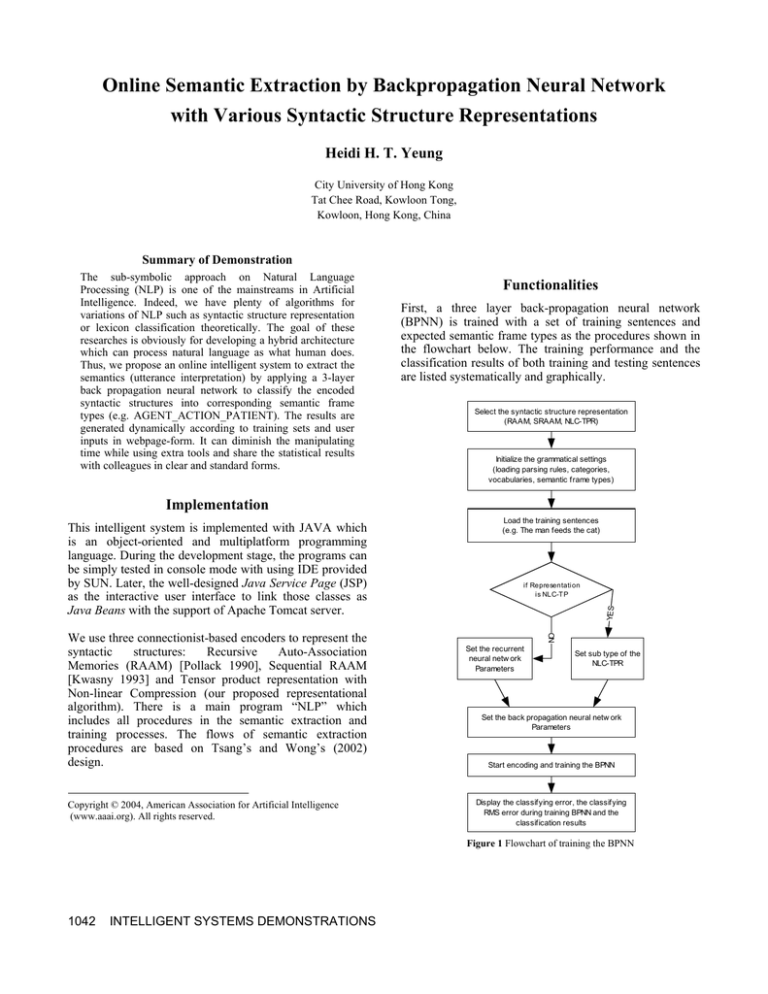
Online Semantic Extraction by Backpropagation Neural Network
with Various Syntactic Structure Representations
Heidi H. T. Yeung
City University of Hong Kong
Tat Chee Road, Kowloon Tong,
Kowloon, Hong Kong, China
Summary of Demonstration
The sub-symbolic approach on Natural Language
Processing (NLP) is one of the mainstreams in Artificial
Intelligence. Indeed, we have plenty of algorithms for
variations of NLP such as syntactic structure representation
or lexicon classification theoretically. The goal of these
researches is obviously for developing a hybrid architecture
which can process natural language as what human does.
Thus, we propose an online intelligent system to extract the
semantics (utterance interpretation) by applying a 3-layer
back propagation neural network to classify the encoded
syntactic structures into corresponding semantic frame
types (e.g. AGENT_ACTION_PATIENT). The results are
generated dynamically according to training sets and user
inputs in webpage-form. It can diminish the manipulating
time while using extra tools and share the statistical results
with colleagues in clear and standard forms.
Functionalities
First, a three layer back-propagation neural network
(BPNN) is trained with a set of training sentences and
expected semantic frame types as the procedures shown in
the flowchart below. The training performance and the
classification results of both training and testing sentences
are listed systematically and graphically.
Select the syntactic structure representation
(RAAM, SRAAM, NLC-TPR)
Initialize the grammatical settings
(loading parsing rules, categories,
vocabularies, semantic frame types)
Implementation
We use three connectionist-based encoders to represent the
syntactic
structures:
Recursive
Auto-Association
Memories (RAAM) [Pollack 1990], Sequential RAAM
[Kwasny 1993] and Tensor product representation with
Non-linear Compression (our proposed representational
algorithm). There is a main program “NLP” which
includes all procedures in the semantic extraction and
training processes. The flows of semantic extraction
procedures are based on Tsang’s and Wong’s (2002)
design.
Copyright © 2004, American Association for Artificial Intelligence
(www.aaai.org). All rights reserved.
Load the training sentences
(e.g. The man feeds the cat)
YES
if Representation
is NLC-T P
NO
This intelligent system is implemented with JAVA which
is an object-oriented and multiplatform programming
language. During the development stage, the programs can
be simply tested in console mode with using IDE provided
by SUN. Later, the well-designed Java Service Page (JSP)
as the interactive user interface to link those classes as
Java Beans with the support of Apache Tomcat server.
Set the recurrent
neural netw ork
Parameters
Set sub type of the
NLC-TPR
Set the back propagation neural netw ork
Parameters
Start encoding and training the BPNN
Display the classifying error, the classifying
RMS error during training BPNN and the
classification results
Figure 1 Flowchart of training the BPNN
1042
INTELLIGENT SYSTEMS DEMONSTRATIONS
To test the classifying performance of BPNN, user can
input the grammatical sentence with the interactive
interface provided. The interface will result the plots of the
output layer activation of BPNN and the determined
semantic frame type. If the expected type is chosen, the
classification error is also calculated as a reference.
After the training of BPNN, the latest data will be stored as
the references and the 4 types of results can be revised
from the system.
1) Encoding Progress – Real time plots of the Rootmean-square (RMS) Error of the recurrent NN during
training for RAAM and SRAAM
2) Classifying Progress – Real time plots of the RMS
Error of the BPNN during training for different data
sets and syntactic structure representations.
Figure 3 Output layer activation of BPNN
The tree from is previewed with the last Flash movie in
Figure 4.
3) Cluster Results – The syntactic structure
representations and the BPNN hidden activation of
training sentences are clustered in the distance map as
Postscript files for different data sets and syntactic
structure representations.
4) Classifying Results – The output layer activations of
BPNN are tabled against both training and testing
sentences for different data sets and syntactic structure
representations.
Special Features
Making use of the dynamic properties in Macromedia
Flash Movie, we create 3 SWF documents for graphical
display. One of them is for plotting the Root-mean square
errors in output layers of recurrent neural network for
RAAM and SRAAM and that of BPNN during training
shown in Figure 2.
Figure 4 Tree display
The cluster results of memories and BPNN hidden layer
activations are generated and stored in server side. Then, a
Java class invokes the Cluster Application and Postscript
Generating Program in operating system.
References
Kwasny, S. C., Kalman, B. L., & Chang, N. 1993.
Distributed Patterns as Hierarchical Structures.
Proceedings of the World Congress on Neural Networks,
Portland, OR, July 1993, v. II, pp. 198-201.
Pollack, J. B. 1990. Recursive distributed representations.
Artificial Intelligence, 36, pp. 77-105.
Tsang, W. M., and Wong, C. K. 2002. Extracting Frame
Based
Semantics
from
Recursive
Distributed
Representation - A Connectionist Approach to NLP. IC-AI'
02.
This System is powered by Apache Tomcat 4.1,
Macromedia Flash MX
Figure 2 Classifying progress display
The second one is the activation plots for BPNN output
layer activation as below.
Copyright © 2004, American Association for Artificial Intelligence
(www.aaai.org). All rights reserved.
INTELLIGENT SYSTEMS DEMONSTRATIONS 1043

